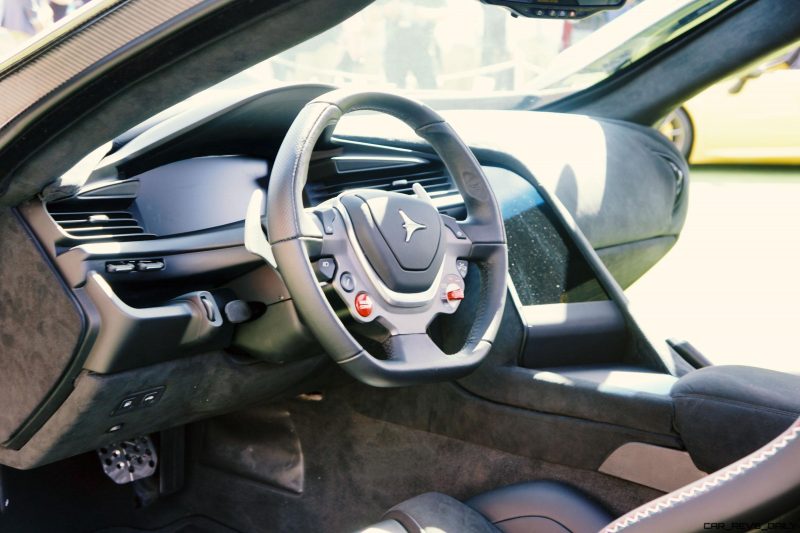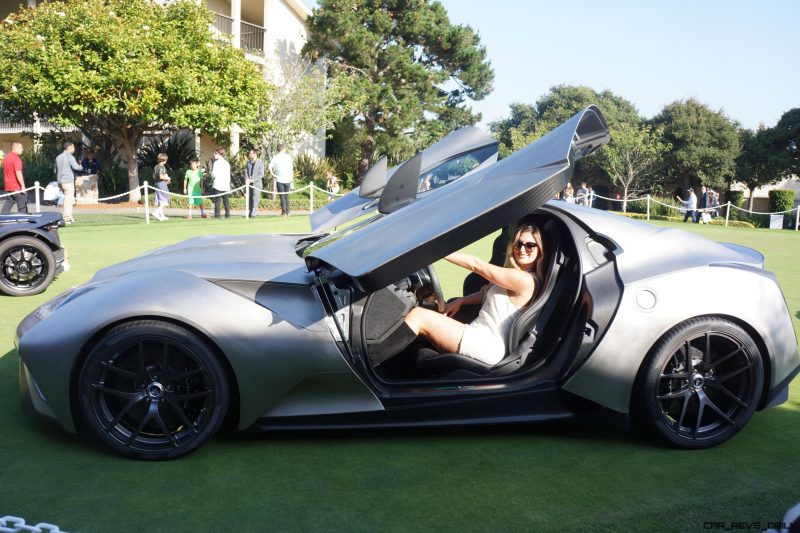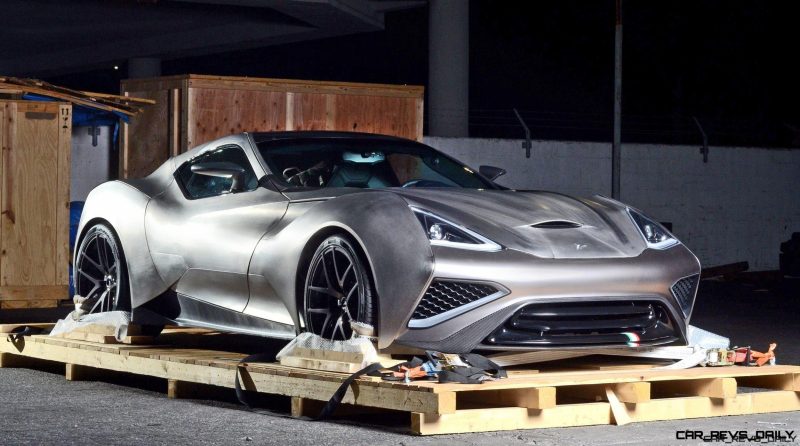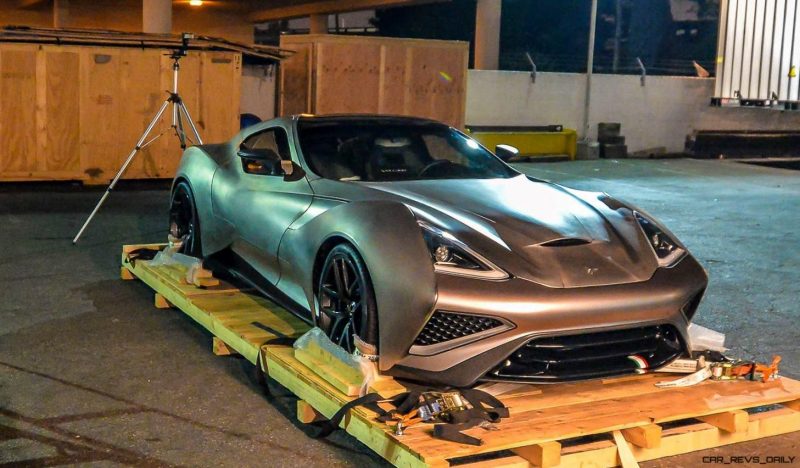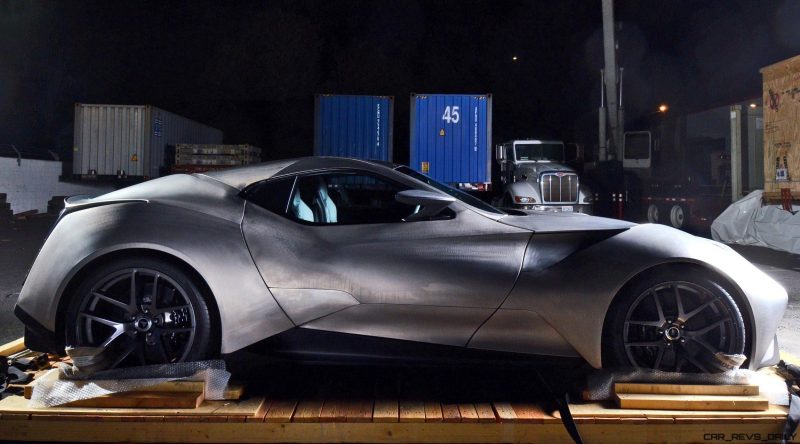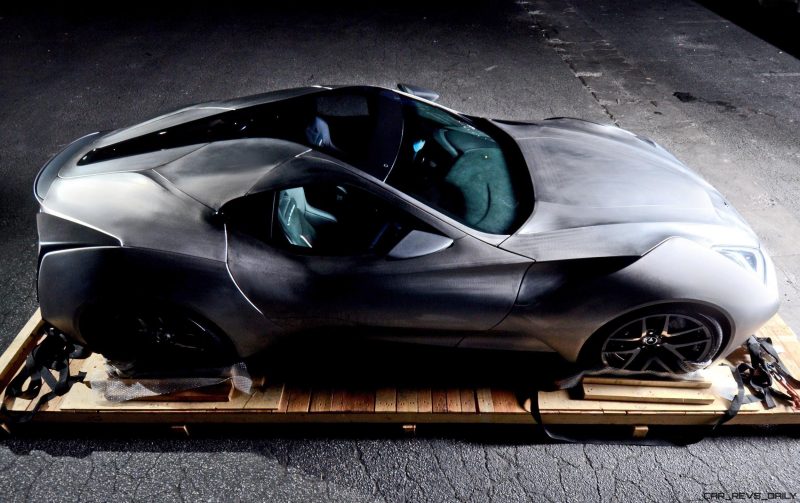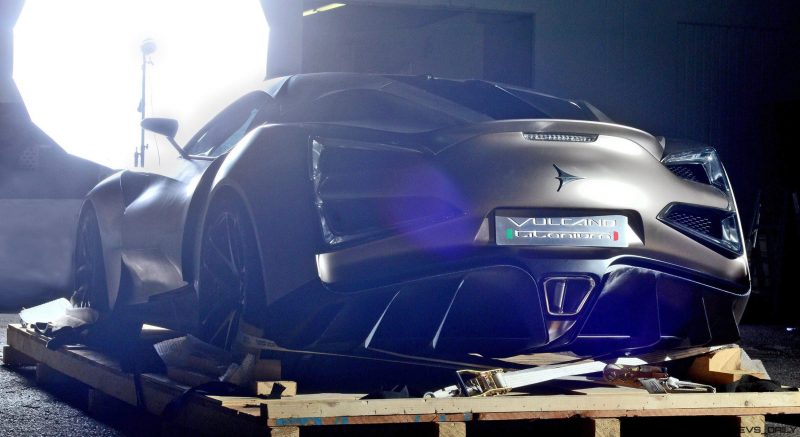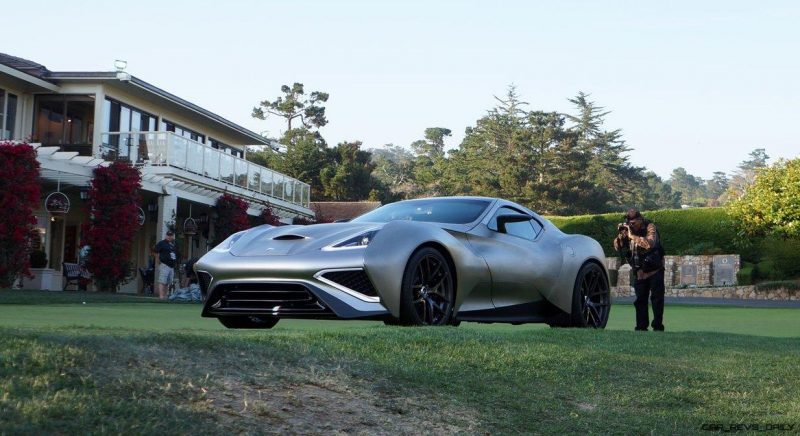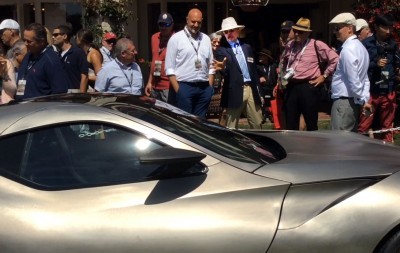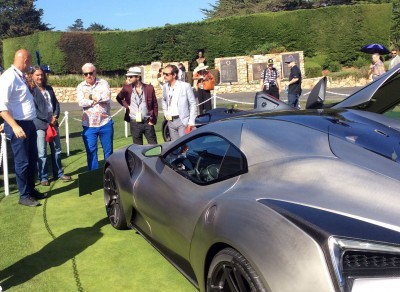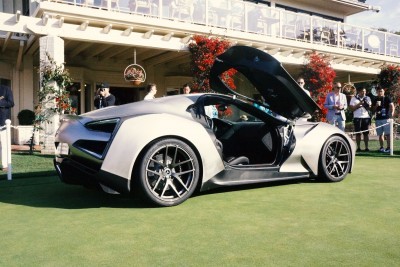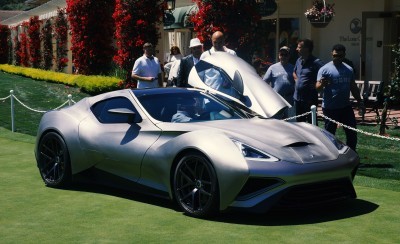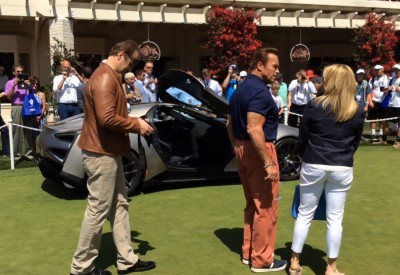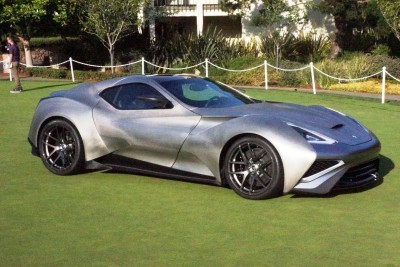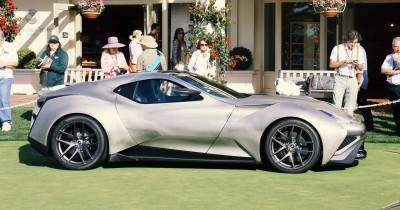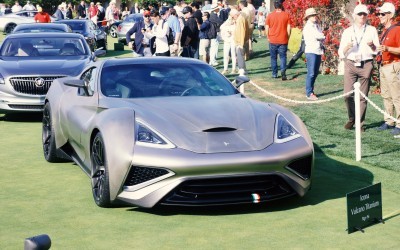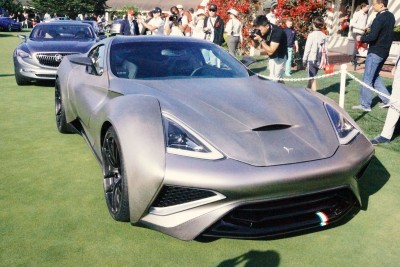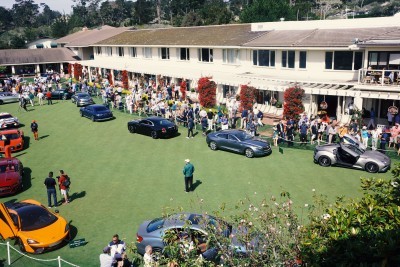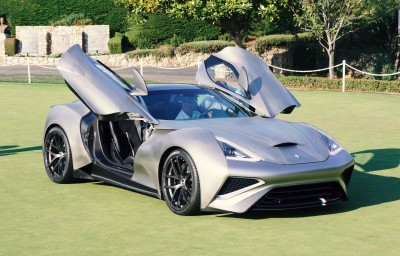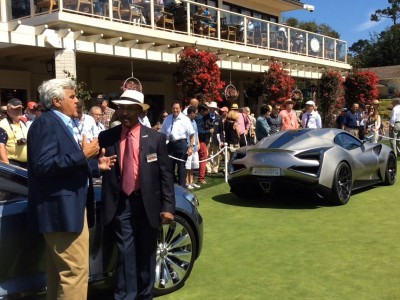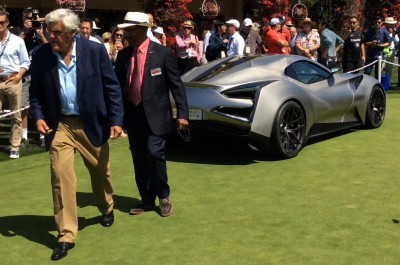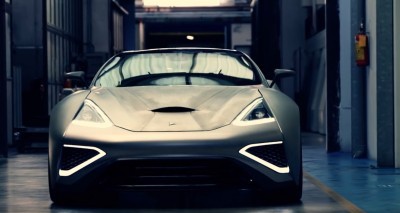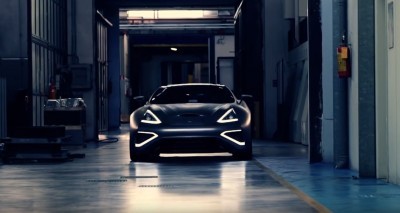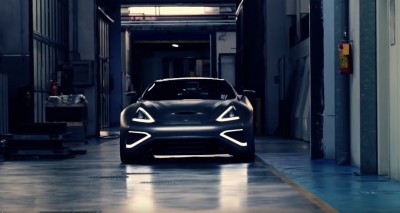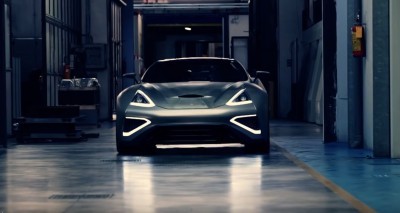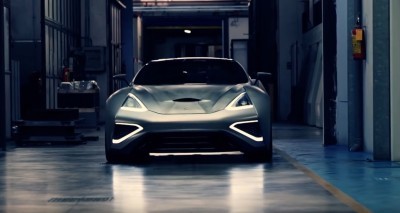![]() Icona is prepping the Vulcano Titanium for Top Marques Monaco — and has shared a new video about the trials and tribulation of creating a titanium-bodied hypercar.
Icona is prepping the Vulcano Titanium for Top Marques Monaco — and has shared a new video about the trials and tribulation of creating a titanium-bodied hypercar.
We must say, despite the very enchanting design and clear purpose — challenging the Ferrari F12 — the Vulcano was quite a curious sight on the Pebble Beach Concept Lawn in 2015.
It is mostly the exposed titanium finish! It is distracting, hard to photograph, and presents pretty poorly versus the ultra-high-gloss paintwork of the others with which it shared the practise putting green.
But that incredible bodywork is also part of the Vulcano’s main selling proposition: bodywork in wild swirls, pinches and angles. All hand-crafted from one of the strongest rare Earth metals on the periodic table.
We of course want to support any new supercar venture, and ICONA seems to have the right ingredients to compete: Italian craftsmanship, engineering and design talent — plus a violently powerful debut model.
However, we’re dubious about the benefits of using titanium for the bodywork. Yes, it is strong. But the Icona Vulcano Titanium shares its engine — and much else, we suspect — with the ~2011 Corvette ZR1. If the core chassis underneath is also Corvette, then the extra titanium bodyshell strength is almost not needed. Why?
All Corvettes have a highly-evolved ladder frame chassis that is not a monocoque in the traditional sense. Corvette bodywork in mostly fiberglass has always let the car — since its birth in 1952 — wear wild shapes un-stampable in steel or other metals. The chassis is just as strong in the Corvette with or without bodywork — in stark contrast to all unibody vehicles that are strong only with their fenders etc bolted on tight.
If the Vulcano were radically lighter than the $100k Corvette ZR1… this all might make sense. The Vulcano’s estimated $700k price might also make more sense.
But as it is on both car’s official spec sheets, the Vulcano weighs about 150 pounds more than the factory ZR1. ZR1 Coupe comes in at 3373-lbs, while the Vulcano is up to 3516 pounds.
Any whiff of a rebodied Corvette is obviously a huge demerit in the hypercar world… and has been since the days of ISO and Bizzarrini in the 1950s and 1960s.![]()
The American link drastically lowers what people will pay for any machine — no matter how exotic the upgrade.
So, while the Vulcano is clearly quite beautiful… we question the titanium focus — almost as much as the coachbuilders who spent 10000-plus hours making this vision real. Check out their facial expressions in the new video for a hint at why the Vulcano may be the first titanium-shelled supercar.
To play the devil’s advocate, we’re including a megabatch of the ICONA Vulcano at its Pebble Beach debut in August 2015.
Commercialization of the Vulcano is not explicit over on the ICONA website. This vehicle is a concept, in theory, but a small batch of others could be made for buyers … willing to part with gold or treasure for the pleasure.
The cabin does look production-ready, with an all-new design, instruments and swan doors. A Ferrari steering wheel and claimed Automatic Modena transmission complete the car’s stunning, if dubious, performance claims.
We say: wrap the car, paint it white… something. The exposed-titanium is just not working as it stands, no matter how hard it was to create.
2017 ICONA Vulcano Titanium
NEW VULCANO TITANIUM VIDEO
Turin, Italy – 24 February 2016. Icona releases new video of Vulcano Titanium celebrating its presence at Top Marque Monaco 2016 (14-17 April 2016)
Icona shows more about the coachbuilding of its one-off creation: the unique titanium body.
After its world premier at Pebble Beach 2015 and its European reveal in Paris, the Italian Design House has scheduled his presence in the European most important show car happenings: next appointment is in April at Top Marque Monaco.
Inspiration for the Vulcano came from the world’s fastest plane, the Blackbird SR-71, whose sharp and dramatic silhouette complimenting its sensual surface transitions was key to the styling of the Vulcano.” said Icona design director Samuel Chuffart. The naked titanium body is a sculpture, revealing its 10,000 hours of hand-crafted work in the most pure form. The Vulcano’s strongly sculpted body side and voluptuous shapes evacuate the hot air from the engine and reduce air turbulence generated by the wheels.
The Vulcano Titanium was built by CECOMP, an Italian coachbuilder with a long and glorious history in the Racing Field (eg: complete body development and production of Lancia Delta S4, Lancia Delta Integrale, Alfa Romeo 155 DTM). The powertrain is the work of Mr. Claudio Lombardi, ex-Scuderia Ferrari director and mastermind of numerous world champion cars, and Mr. Mario Cavagnero the man behind the Lancia Racing Team and father of the engine of many championship-winning cars (the famous Lancia Delta Integrale and 037, as well as the complete Peugeot 205 T16 and 405 t16 series)
The Vulcano (volcano in Italian) has a mid-front engine calibrated for homologated road and race use with an optimum balance of usability and efficiency. Capable to be tuned to well near 1.000 horsepower should the owner demand it, the optimized 670 horsepower and 840 N/m of its supercharged V8 is coupled with a paddle-shift close ratio gearbox from Automac Modena, allowing 0 to 60 kw/h in 2.8 seconds and 120 km/h in 8.8 seconds.
Founded in early 2010, ICONA brings together the best of European design, engineering, modeling and prototyping experience. This Italian design house born in Torino is working around the globe, providing leading design services and prototyping through an integrated partnership with Torino-based coachbuilder Cecomp. Today, Cecomp is involved in all stages of the car lifecycle: from style development and prototypes through to the supply of complete vehicles for some of the world’s most prestigious automotive brands. Cecomp has manufactured several one-off cars previously seen at the best Concours d’Elegance worldwide.
Official: iconavulcano.com
Facebook: facebook.com/iconavulcano
CECOMP: cecomp.it
Photos courtesy from Highlandx Magazine
Technical DATA
| DIMENSIONS | ||
| Length | 4450 mm | |
| Width | 1960 mm | |
| Height | 1240 mm | |
| Wheel base | 2698 mm | |
| Mass | 1595 kg | |
|
|
||
| TIRES | ||
| Front | Pirelli PZERO 285/30 ZR 20 | |
| Rear | Pirelli PZERO 355/25 ZR 21 | |
| BRAKING SYSTEM | ||
| Front | 400mm CCM-Rdisk Brembo 6 pist. Calipers | |
| Rear | 380mm CCM-Rdisk Brembo 4 pist. Calipers | |
| PERFORMANCE
|
||
| 0-100 Kmh (0-60 mph) | 2.8 sec | |
| Standing 0-400 meters (¼ mile) | 8.6 sec | |
| Top Speed | 355 Km/h (220 mp/h) | |
World’s First Titanium Car
http://www.iconavulcano.com/

Tom Burkart is the founder and managing editor of Car-Revs-Daily.com, an innovative and rapidly-expanding automotive news magazine.
He holds a Journalism JBA degree from the University of Wisconsin – Madison. Tom currently resides in Charleston, South Carolina with his two amazing dogs, Drake and Tank.
Mr. Burkart is available for all questions and concerns by email Tom(at)car-revs-daily.com.

